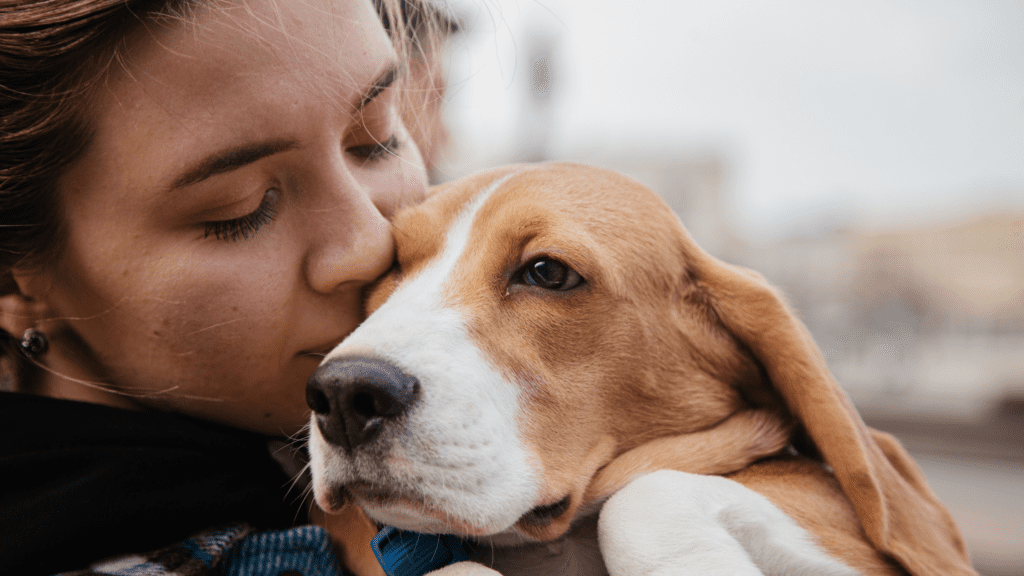Saying goodbye to a beloved pet is one of the most difficult experiences a pet owner can face. Our animals are more than companions—they are family. As they near the end of their journey, they rely on us to provide comfort, love, and understanding. End-of-life counseling can help ease this transition, not only for the pet but also for the human who must navigate the emotions of loss.
Each species experiences their final moments differently, and by recognizing their unique needs, we can ensure they pass peacefully, feeling safe, heard, and deeply loved.
How End-of-Life Counseling Varies Across Species
Dogs: Seeking Reassurance and Emotional Connection
Dogs are deeply attuned to their human’s emotions and often mirror their energy. They may seek comfort in their final days, staying close to their people or demonstrating subtle signs that they are holding on for their owner’s sake.
- Emotional Support: Dogs often need reassurance that their humans will be okay without them. Expressing gratitude, love, and permission to pass can help a dog feel at peace.
- Physical Comfort: Dogs may display pain or discomfort more visibly, making it easier to recognize when adjustments are needed to improve their quality of life.
- Signs of Readiness: No longer eating and drinking, withdrawal, restlessness, and labored breathing may indicate that a dog is preparing for their transition.
Cats: Independence and Subtle Cues
Cats have a unique way of processing their final days, often maintaining their independence while subtly signaling their needs. They may retreat for solitude or seek comfort in ways that differ from their usual behavior.
- Respecting Their Boundaries: Some cats prefer to be alone in their final days, while others seek more affection than usual. Paying attention to their shifting needs is crucial.
- Unseen Discomfort: Cats are masters at hiding pain, making it essential to observe changes in behavior, eating habits, or interactions to assess their well-being.
- Spiritual Perspective: Many believe that cats have a strong spiritual connection, and their passing may be viewed as part of a greater journey rather than an end.
Horses: Legacy and the Role Within the Herd
Horses have a unique relationship with their humans, often serving as partners in work, sport, or therapy. Their end-of-life needs include both emotional and physical considerations, especially given their size and herd instincts.
- Understanding Their Role: Horses often develop deep connections with their owners and herd members. Recognizing and honoring their role can help them feel acknowledged and at peace.
- Physical Needs: Ensuring a horse’s final days are comfortable means considering their mobility, pain levels, and whether they feel safe in their environment.
- A Sense of Completion: Expressing gratitude and acknowledging their contributions—whether in companionship, service, or sport—can provide emotional closure for both the horse and the human.
Insights from My Session with a Client and Her Dog Woody
In a recent session, I connected with Woody, a 16-year-old dog, to help his owner understand his perspective on his final days. Unlike humans, animals do not carry the same fears, expectations, or emotional burdens surrounding death. Many see it as a natural progression—a transition rather than an end.
Woody shared with me an analogy to describe his view of his physical body. He likened it to an old, beloved coat that has served its purpose but is now worn out. He understands that stepping out of this body is not an end, but rather a freeing experience, similar to shedding a heavy garment.
As I tuned into Woody’s energy, I felt peace, lightness, and even joy. He is not afraid—only tired. He reassured me that he still enjoys his days but also recognizes that his body is preparing for the transition. This is the moment where pet owners can give their animal the greatest gift—permission to go when they are ready.
Signs Your Pet May Be Ready to Transition
Each pet will communicate their readiness in different ways. Some common signs across species include:
- Loss of Appetite: A gradual or sudden disinterest in food and water.
- Withdrawing from Interaction: Seeking solitude or showing less interest in usual activities.
- Seemingly Unresponsive: Extended periods of deep, unresponsive sleep or a vacant, detached expression in their eyes, as if they are beginning to withdraw from their surroundings.
- Changes in Breathing: Labored breathing, excessive panting, or irregular patterns.
- Physical Decline: Increased pain, difficulty standing, or noticeable weakness.
- Seeking Comfort: Some pets may become more affectionate, needing reassurance from their humans.
Observing these signs can help pet owners make compassionate decisions about their pet’s end-of-life care.
Creating a Peaceful, Loving Environment for Your Pet’s Final Moments
As difficult as it is, ensuring a pet’s passing is as peaceful as possible is a final act of love. Here are some ways to provide comfort during their transition:
- Remain Present: Your presence can offer immense comfort, even if your pet seems withdrawn. Speak to them softly, reassure them, and let them know they are not alone.
- Provide Familiar Scents and Sounds: Surround them with their favorite blanket, a beloved toy, or calming music to help create a sense of safety.
- Communicate with Them: Whether verbally or through silent understanding, let them know how much they are loved and that it is okay for them to let go.
- Consider Support from an Animal Communicator: If you feel uncertain about your pet’s needs or emotions, an animal communicator can help provide clarity and connection. Pets are often able to express their final wishes, such as, seeing a friend one more time or a final walk in the park.
A Final Act of Love
Choosing to assist a pet in their transition is one of the greatest acts of love we can offer. It is never about giving up on them but about ensuring they leave this world with dignity, peace, and comfort. The journey through grief is natural, but as Woody showed me, it is also meant to be a passage back into light and healing.
Our pets don’t want us to suffer in grief. They want us to continue sharing love, to honor their memory by caring for another, and to move forward with lightness instead of sorrow. They are not gone—they simply exist in another form, watching over us, bringing comfort in ways we might not immediately recognize.
Though the pain of losing a pet is deep, the love shared remains eternal. By focusing on their comfort, validating their emotions, and ensuring they know they are cherished, we can offer them the most beautiful gift in their final moments—peace.
Download My End-of-Life Guide Here



